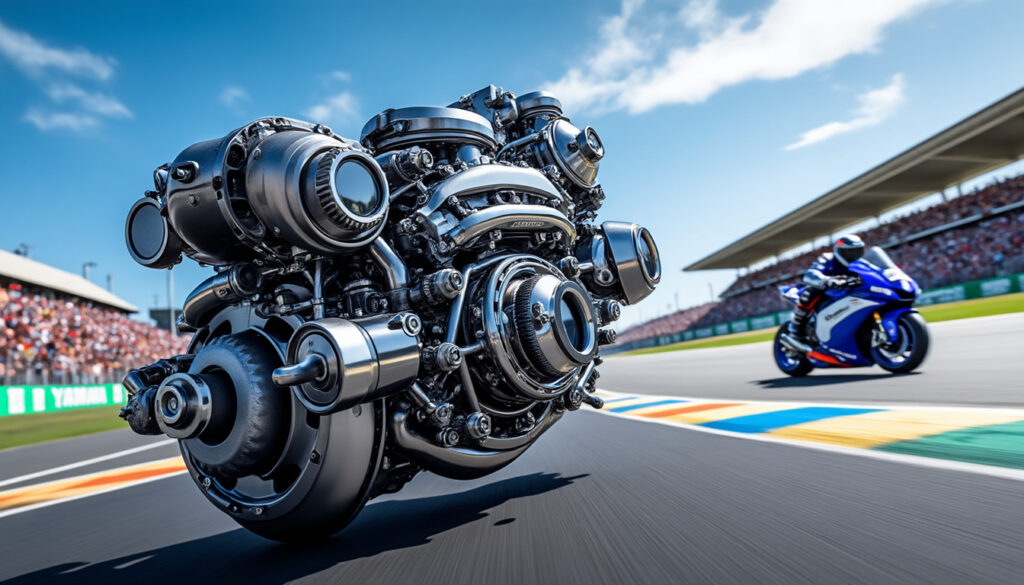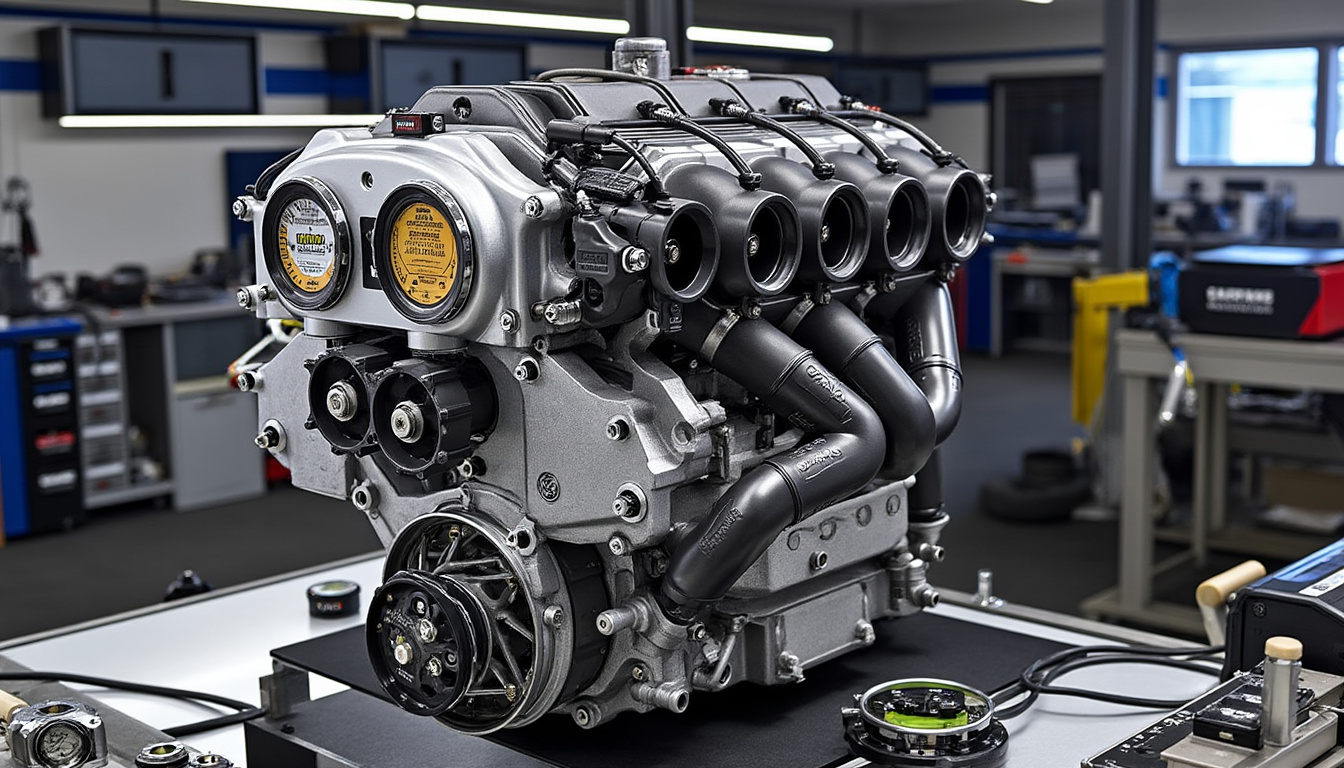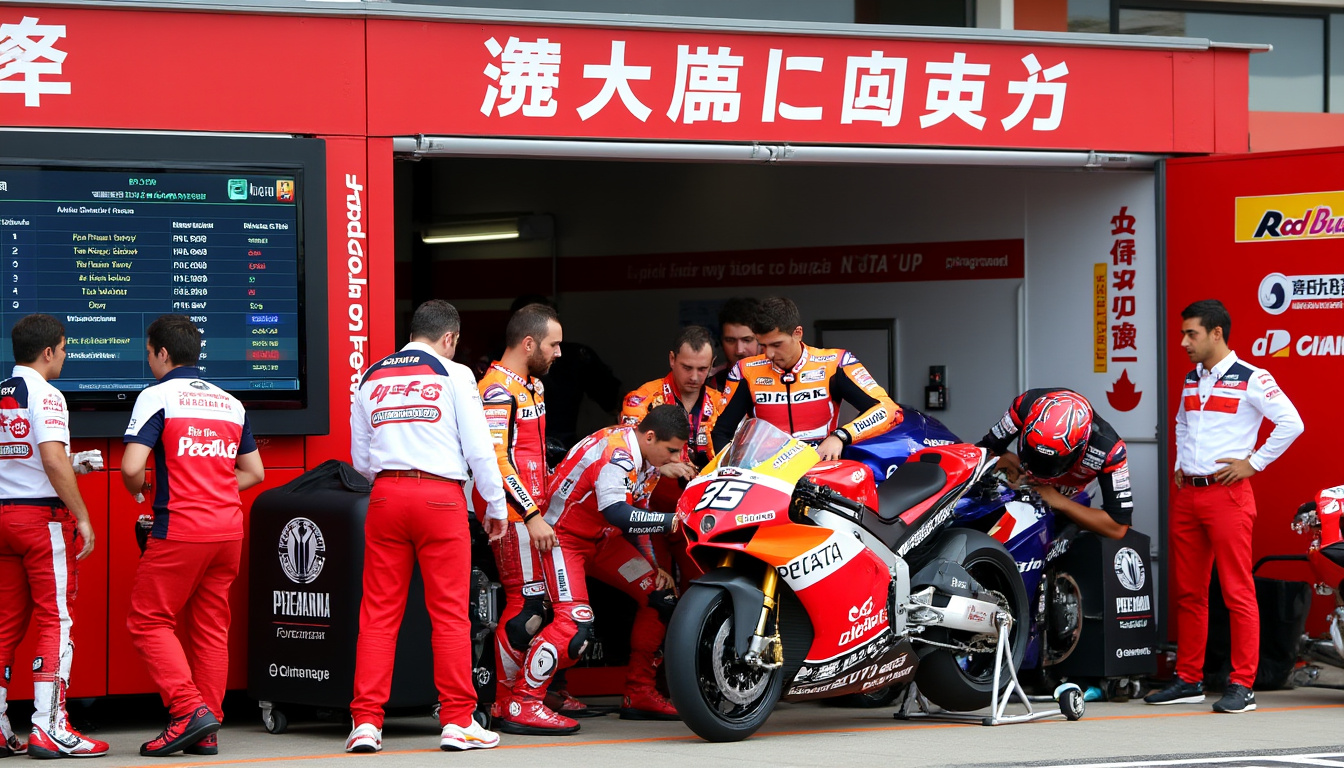Yamaha hopes to see its brand new V4 MotoGP engine in action as early as this season

In the fast-paced world of MotoGP, each season brings its share of surprises and innovations. 2025 is no exception, as Yamaha, the iconic Japanese manufacturer, aims for a striking entry with its brand new V4 engine. The shift from an inline four-cylinder engine architecture to a V4 represents not only a technical challenge but also an opportunity to get closer to the best on the grid. While other manufacturers have already adopted the V4, Yamaha is preparing to test its new creativity on the track with the promise of enhanced performance.
The stakes of a new engine in MotoGP
In MotoGP, the architecture of an engine is essential for determining the overall performance of a motorcycle. Currently, most major brands, including Ducati and Honda, have embraced the V4 format, which offers high-performance characteristics for the circuit. This transition thus represents a central issue for Yamaha, which must meet the expectations of its riders while facing increasing pressure from the market. V4 engines are distinguished by their ability to deliver high power and torque, while allowing for better maneuverability and greater energy efficiency.

The specifics of the Yamaha V4 engine
The development of Yamaha's V4 engine has been intensive and meticulous. Paolo Pavesio, sports director of Yamaha, emphasized that this project represents a completely new motorcycle rather than just a simple reconstruction of an engine. Here are some notable aspects:
- Design and engineering: The V4 engine is designed to optimize weight distribution, thereby enhancing agility on the track.
- Performance: Initial tests suggest a significant increase in power compared to the current M1.
- Durability: The new technologies used aim to improve the engine's longevity while minimizing wear during races.
With such a complex engine, reliability is paramount. Yamaha must balance performance and durability to ensure that riders can push the machine to its limits without compromise. At this stage of development, every small adjustment can have a major impact on final performance.
Testing on the circuit: a crucial step
Before integrating this engine in official races, Yamaha plans to test it under real conditions. These tests take place on circuits such as Valencia, where the brand can collect valuable data. The goal is to compete with this V4 as soon as possible. According to team officials, this phase is fundamental to refining the machine's characteristics and resolving potential issues before it is put in the hands of official riders.
| Event | Date | Objective |
|---|---|---|
| Preliminary tests | May 2025 | Adjustment and validation of performance |
| Race tests | June 2025 | Evaluation under real conditions |
| Official integration in competition | After the summer break | Participation with wildcards |
Initial feedback from test riders
Experienced riders such as Cal Crutchlow and Andrea Dovizioso are at the forefront of testing this engine. According to their feedback, Yamaha's V4 engine provides a sensation of power and control that is unprecedented. Further adjustments will be necessary to maximize performance based on the specific requirements of the circuits. The riders trust Yamaha's engineering and are eager to see how this new engine can propel them to the podium.
The strategic implications of an architectural change
Making such a radical change as moving from an inline four-cylinder engine to a V4 engine does not come without consequences for various aspects of the team’s strategy. For Yamaha, this means re-evaluating its overall approach to engineering and optimization. The introduction of the V4 engine comes at a crucial time, as MotoGP rules are set to evolve.

The implications for future development
With the announcement of new regulations for 2027, including a reduction of engine displacement from 1000 cc to 850 cc, Yamaha must anticipate its long-term strategy. The development of the V4 could serve as a springboard for this transition. Here are some ramifications of such a strategy:
- Anticipating regulations: Yamaha must consider how its new engine can comply with future standards.
- Focus on performance: A V4 allows optimization of torque and power characteristics to meet new requirements.
- Impact on brand image: By adopting modern designs, Yamaha aligns itself with the innovation of other brands, thus strengthening its image as a leader.
Balancing innovation and tradition
The shift to a V4 also represents a cultural change within Yamaha, which has long been attached to its history of inline engines. This may raise questions among the brand's fervent supporters. How to maintain this tradition while innovating in a competitive environment? This challenge translates, among other things, into the need to balance technical heritage with the thirst for novelty.
| Tradition | Innovation |
|---|---|
| Reputed inline 4-cylinder engines | V4 engines for enhanced performance |
| Strong brand identity | Adjustment to MotoGP standards |
| Support from historical fans | Attraction of new enthusiasts |
The market and competition dynamics
MotoGP is more than just a racing series; it is also a technological battleground. As Yamaha looks forward to seeing the performance of its V4 engine, competition remains fierce. Ducati, Honda, and KTM, for example, already hold an advantage with their proven V4 engines. This context underscores the importance of the intensive testing and optimization that Yamaha is pursuing.
The impact of competition on Yamaha
The dynamics between MotoGP teams strongly influence development strategies. While many brands are already testing V4 engines, Yamaha must navigate this competitive landscape while strengthening its own capabilities. The pressure can be both motivating and overwhelming. Among the stakes:
- Performance analyses: Understanding how competitors leverage the power of their engines to respond effectively.
- Rider relations: Ensuring good communication between the technical team and the riders to extract the maximum from the new engine.
- Understanding fan expectations: Adhering to a vision that satisfies not only on-track performance but also resonates with supporters.
The stakes for the brand in a competitive environment
In the long run, Yamaha will need to not only optimize its V4 engine but also consider the influence of market trends on its brand image. The need to remain at the forefront of technology is paramount. Through innovation, it must also meet the expectations of an increasingly demanding public while maintaining adherence to its heritage. The economic implications are thus significant, with investment in research and development needing to generate a return to ensure the brand's sustainability.
Consequences of a rapid introduction of the V4 engine
As Yamaha aspires to see its V4 engine in action during the current season, this also means that any unforeseen introduction could have unpredictable consequences both technically and strategically. For such a complex machine, the challenges extend beyond simply running the engines to understanding the necessary optimizations for each circuit.
The benefits of early introduction
Testing a new technology in early races allows for the accumulation of valuable data that can be used for future development. To maximize efficiency:
- Data collection: Analyzing how the engine behaves in real race conditions.
- Rider feedback: Gathering concrete impressions from riders on handling and performance.
- Fine-tuning adjustments: Tweaking the motorcycle's behavior based on responses on the track.
The risks associated with a rapid rollout
However, a too-quick introduction could have negative effects. An unfinished engine could lead to reliability issues. That’s why Yamaha ensures that the engine has obtained all necessary validations before being committed to competition. The implications of accidents or engine failures on Yamaha’s reputation in such an exposed circuit must be seriously considered.
| Benefits | Risks |
|---|---|
| Collection of reliable data | Possible mechanical failures |
| Performance optimization | Impact on brand reputation |
| Better integration on the circuit | Frustration of riders and fans |
Source: www.caradisiac.com
Leave a Reply



Articles relatifs